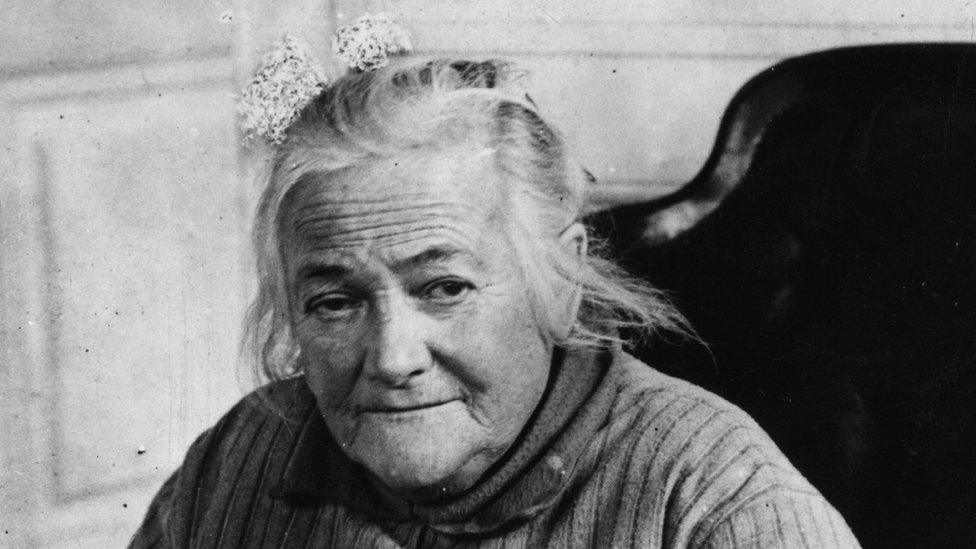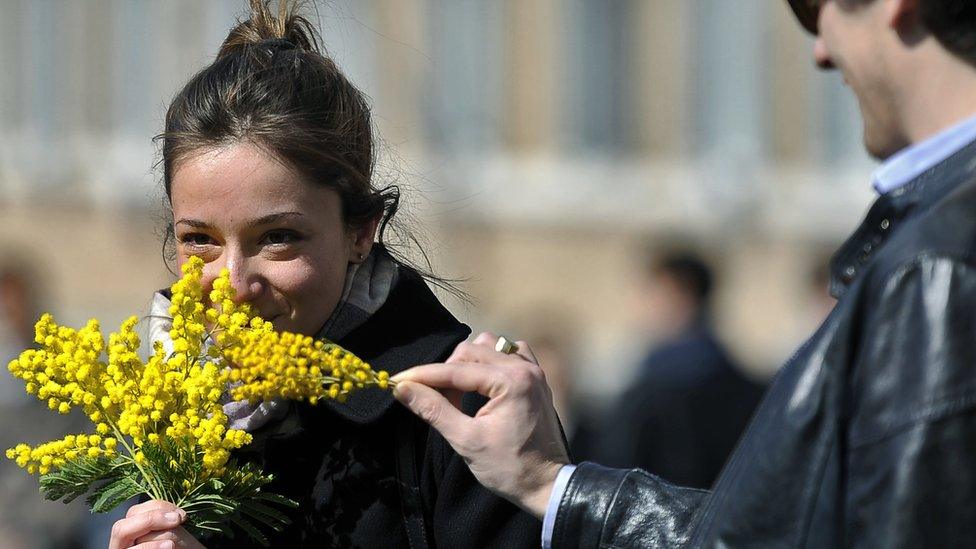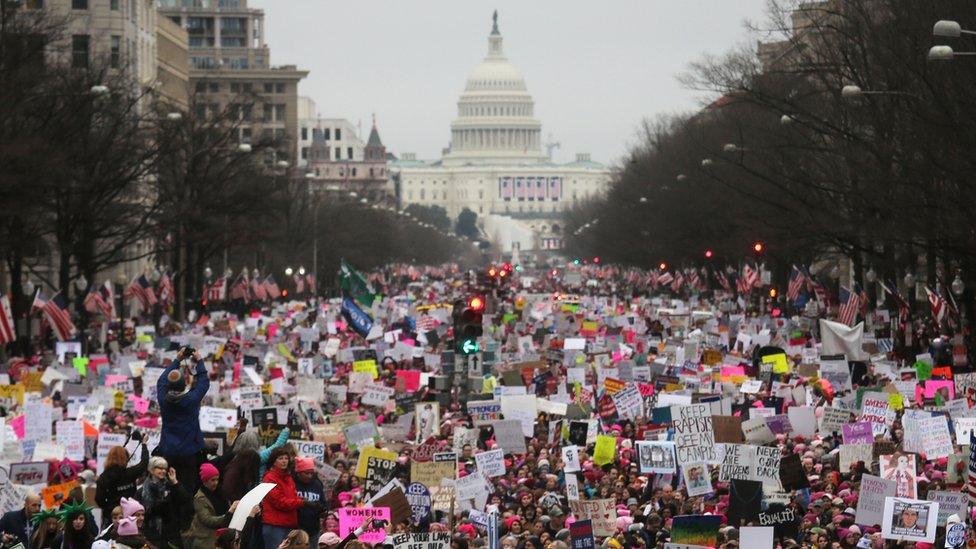International Women's Day 2018: History, strikes and celebrations
- Published

An International Women's Day demonstration in Diyarbakir, Turkey in 2016
You might have seen International Women's Day mentioned in the media or heard friends talking about it. But what is it for? When is it? Is it a celebration or a protest? And is there an equivalent International Men's Day?
For more than a century people around the world have been marking this day. Read on to find out why.
1. When did it all start?
International Women's Day grew out of the labour movement to become a UN-recognised annual event.
The seeds of it were planted in 1908, when 15,000 women marched through New York City demanding shorter working hours, better pay and the right to vote. It was the Socialist Party of America who declared the first National Woman's Day, a year later.
The idea to then make the day international came from a woman called Clara Zetkin. She suggested the idea in 1910 at an International Conference of Working Women in Copenhagen. There were 100 women there, from 17 countries, and they agreed unanimously.
It was first celebrated in 1911, in Austria, Denmark, Germany and Switzerland. The centenary was celebrated in 2011, so this year we're technically celebrating the 107th International Women's Day.

Clara Zetkin founded International Women's Day in 1910
Things were made official in 1975 when the United Nations (UN) started celebrating the day and later set an annual theme. The first one (in 1996) was "Celebrating the past, Planning for the Future".
International Women's Day has become a date to celebrate how far women have come in society, in politics and in economics, external, while the political roots of the day mean strikes and protests are often organised to raise awareness of continued inequality.
2. When is it?
8 March. Clara Zetkin's initial idea for an International Women's Day had no fixed date and it wasn't formalised until a war-time strike in 1917 when Russian women demanded "bread and peace". Four days into the women's strike the Tsar was forced to abdicate and the provisional government granted women the right to vote. The date when the women's strike commenced on the Julian calendar, which was then in use in Russia, was Sunday 23 February. This day in the Gregorian calendar was 8 March - and that's when it's celebrated today.
3. Is there an International Men's Day?
There is indeed, on 19 November. But it has only been marked since the 1990s and isn't recognised by the UN. People celebrate it in more than 60 countries, including the UK. The objectives of the day are "to focus attention on men's and boys' health, improve gender relations, promote gender equality, and highlight positive male role models". The theme for 2017 was 'Celebrate Men and Boys.'
4. How is Women's Day celebrated around the world?
International Women's Day is a national holiday in many countries including Russia, where the sales of flowers doubles during the three or four days around 8 March as men and women give flowers to their female loved ones and co-workers.

A woman holds a bunch of mimosa in Rome on International Women's Day 2012
In China, many women are given a half-day off work on 8 March, as advised by the State Council, although employers don't always observe the tradition.
In Italy, International Women's Day or la Festa della Donna is celebrated by the giving of mimosa blossom. The origin of this tradition is unclear but it is believed to have started in Rome after World War Two.
In the US, the month of March is Women's History Month. A presidential proclamation issued every year honours the achievements of American women.
5. What is happening this year?
An International Women's Day campaign, external has taken on the theme #PressForProgress.

An estimated 500,000 people attended the March on Washington
Last year, millions of protesters in the US and around the world took to the streets in favour of women's rights after the election of Donald Trump to the US presidency.
In 2018 tens of thousands of people took to the streets again in cities across America, to demonstrate against the president, as well as encourage more women to sign up to vote.


What is 100 Women?
BBC 100 Women names 100 influential and inspirational women around the world every year. We create documentaries, features and interviews about their lives, giving more space for stories that put women at the centre.
On 8 March, BBC 100 Women will be showcasing inspirational stories from women in the UK and across the world.
Follow BBC 100 Women on Instagram, external and Facebook , externaland join the conversation.